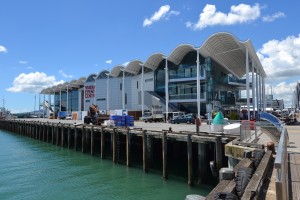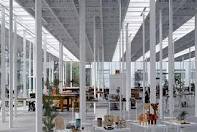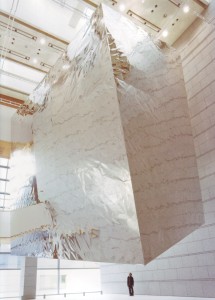Conference inspires
Following the successful and enjoyable 2011 conference at Auckland’s Sky City, I was full of anticipation about this year’s conference.
But it got off to a good start simply by being held in Gordon Moller’s recently completed ripply-roofed , sparkly glass jewel box Viaduct Events Centre.

Moller has finally shed Wellington’s Queens Wharf Events centre shedness.
After the disasters in Christchurch, last year’s theme was about architects and earthquakes. This year it was ‘Our Place in the New World – South and East’
Outgoing NZIA president, Patrick Clifford, and the Conference committee excelled in establishing a great lineup of presenters from Chile, Mexico, Japan, China, India, South Africa, Malaysia and Australia. Local architects added condiments to the international feast.
European and North Americans architects were not required, as clearly the global architectural centre of gravity has indeed moved south and east.
The 600 architects in the audience were enthralled, enchanted, absorbed and challenged by both the presentations and the intervening panel discussions.
By six pm on day one it felt like it could hardly get better. And then along came Junya Ishigami.
This young, super cool, Shibuya-dressed, ex Kazuyo Sejima pupil, was persuaded to come out by Prof Andrew Barrie, from the Auckland School of Architecture( himself an ex pupil of Toyo Ito.)
Junya flew in, presented brilliantly, and flew out. ‘Very busy in Tokyo’ he said.
Japanese architects generally surprise and delight with their technically impressive and poetic designs, usually presented enthusiastically in Janglish.
I am unable to decide if Junya is mad or is a genius. Probably a bit of both.
He takes minimalism and lateral thinking to a new level.
His first’ project’ was a preposterously 2mm thin aluminium dining table spanning 8.0m with no visible means of support.
Turns out the metal was rolled upwards, so that the forces acting to launch the table with its crockery and food, up toward the ceiling, are counterbalanced by the ever present downward force of Madam Gravity.
Another of Junya’s projects was a 45 x 45m single floor university building .
 It had about 300 column randomly spaced, and creating a magical specific non specific and partitionless all-white space.
It had about 300 column randomly spaced, and creating a magical specific non specific and partitionless all-white space.
Each column was individually engineered.
Variations of pedestrian movements and partitioning options were humourously presented on a video.
His final project was ‘the square balloon’. A 20 x 20 x 20 aluminium space framed and clad pristine cube filled with 8000 m3 of helium, floating within a huge shopping centre atrium.
 Junya had a video in which a corner of this one tonne behemoth being one finger gently prodded upwards, as it tried to settle on a little girl underneath it.
Junya had a video in which a corner of this one tonne behemoth being one finger gently prodded upwards, as it tried to settle on a little girl underneath it.
I wonder if it occurred to him that when the helium was eventually released, he could get into the Guiness Book of Records by creating the greatest ever number of simultaneously squeaky voices.
He was the high point for me in a conference packed with goodies. So many impressions and images, some fleeting and some fixed in my mind.
So brief highlights:
• Paloma Vera from Mexico City.
20million people seem to live and function within settlements that from the air look like rubbish tips with roads.
• Peter Rich from South Africa.
Showed meaningful and optimistic architectural beauty within poverty.
• Richard Hassell, from Singapore.
Similar densities of people can be packaged in high rise megalopli, safe, green and naturally ventilated. Wellington architects noted that breezes in Singapore can get up to 5.0km/hr!
• Gurgit Matharoo, from India.
‘We build first and think about it later’.
As well as scientifically proving that concrete is the most environmentally sustainable material, he had pictures of animals. ‘Contrary to what you may hear, there are still leopards in India’.
His practice (envy here) also designs vehicles (they looked like they were from Mad Max though) and his visit to NZ seemed to be based on being able to get up close and personal to a Britten motorcycle. I wonder if he has an Indian in his collection.
• Michaels Lavery and Banney, and Ben Vielle, from Brisbane.
Intelligent ,subversive,and site responsive.
All the things that Harry Seidler was not.
• Yung Ho Chan, from Beijing.
As the retiring professor at the Architectural Dept of MIT, he had the authority to say that ‘it was all over in North America’
So there we are, a great social and inspirational get-together.
If this conference was a snapshot of what is happening architecturally in ‘developing’ countries, the world may well have a rosy future.
